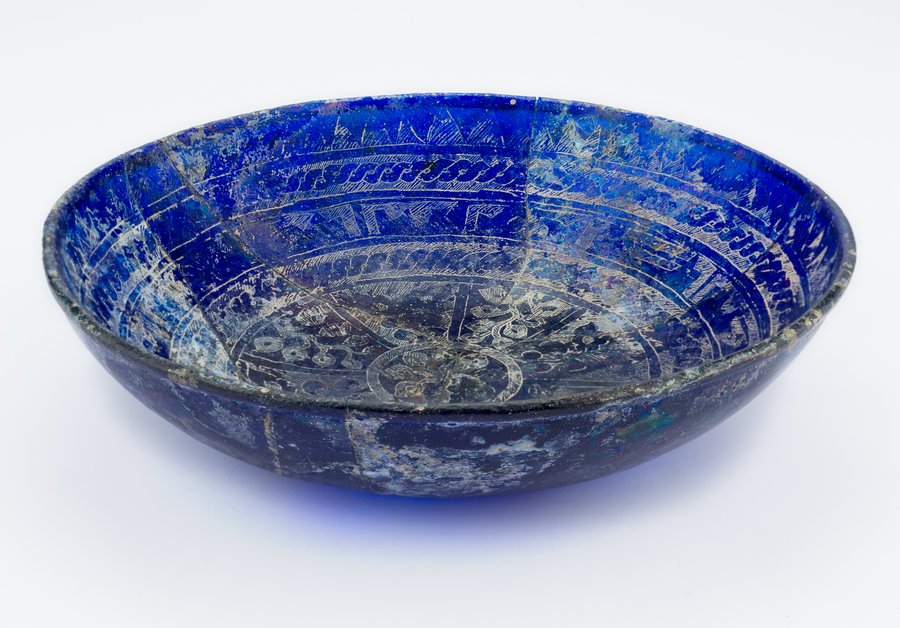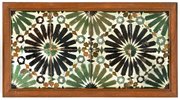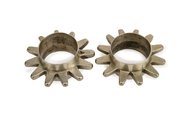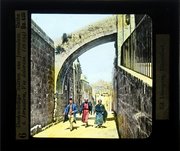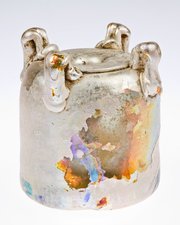
Scratch-Engraved Glass Dish
Museum of Islamic Art
- Title:
- Scratch-Engraved Glass Dish
- Production place:
- Syria
- Date:
- 800 - 899
- Period:
- Abbasid
- Title:
- Scratch-Engraved Glass Dish
- Production place:
- Syria
- Date:
- 800 - 899
- Period:
- Abbasid
- Material:
- Glass
- Technique:
- Glassblowing, Scratch-engraving
- Dimensions:
- 4.8 cm
- Diameter:
- 19.6 cm
Cut glass, which origins are drawn from Sasanian traditions, is the most used technique in the 3rd and 4th century AH / 9th and 10th century CE. Although most objects produced during that time were wheel-engraved, this dish is characteristic of the scratch-engraved technique, which consisted of decorating the surface of the object with a pointed hard stone, similarly to the sgraffito technique used in ceramics. Examples of the kind include mainly dishes, bottles, beakers or bowls. They combine white intricate geometric and vegetal motifs engraved on the surface of blue coloured glass. The decoration usually consists of hatching the surface to create registers of motifs contrasting in reserve. The different bands of patterns start in the middle with trees, then alternate with interlaced ‘rope’ bands and one inscription consisting of a proverb that reads inna al-tafkir fi-l-muqal innahu hikma wa inna al-muqal min ba‘d al-tafkir ajmal, al-salama (‘Verily, reflection in speech is wisdom and speech after reflection is more graceful. Well-being’). A whole group of similar objects and related fragments were discovered in the 3rd century AH / 9th century CE Famen temple in China as well as Raqqa and Nishapur. This information further helps dating this production as well as highlighting its high value in international trade.
